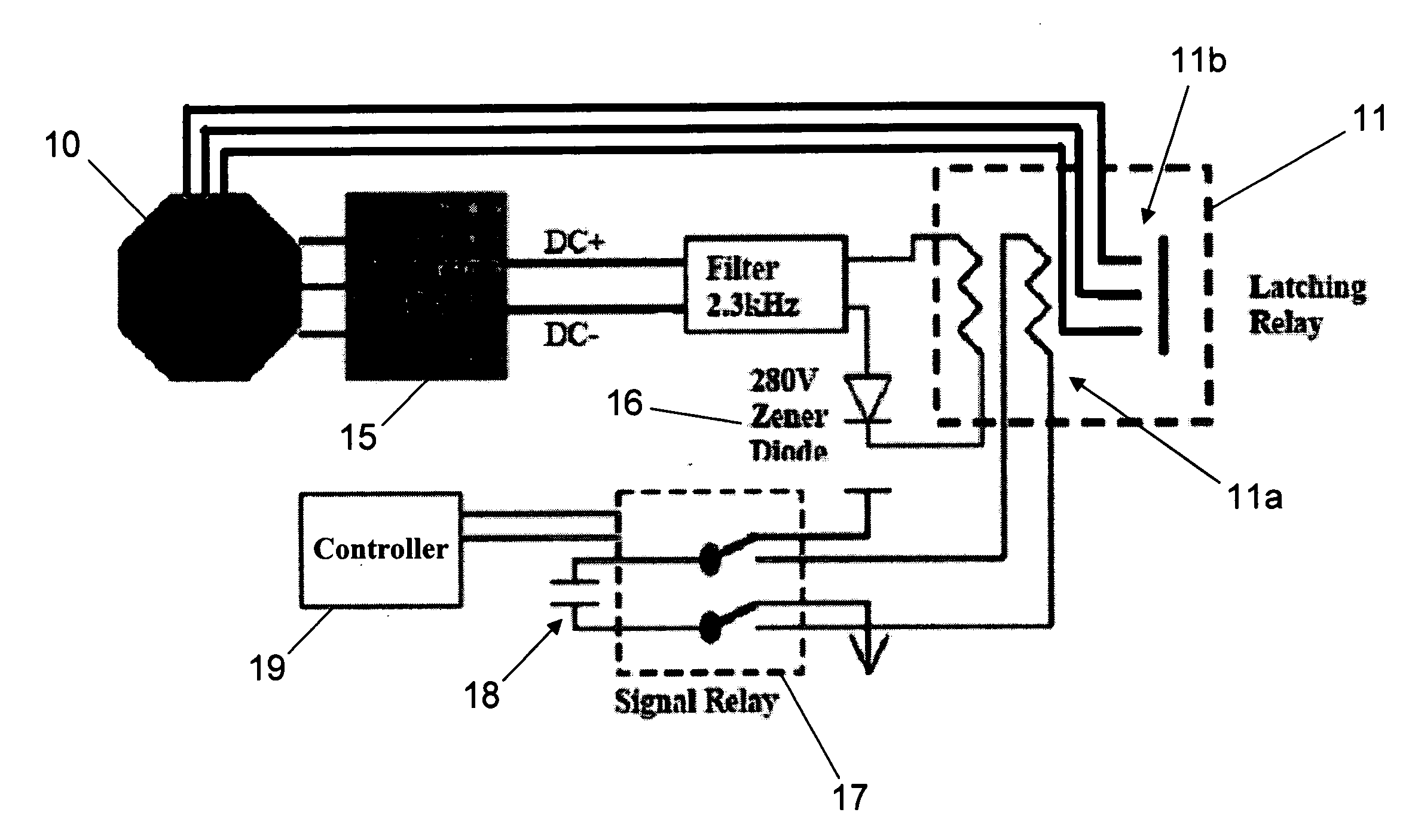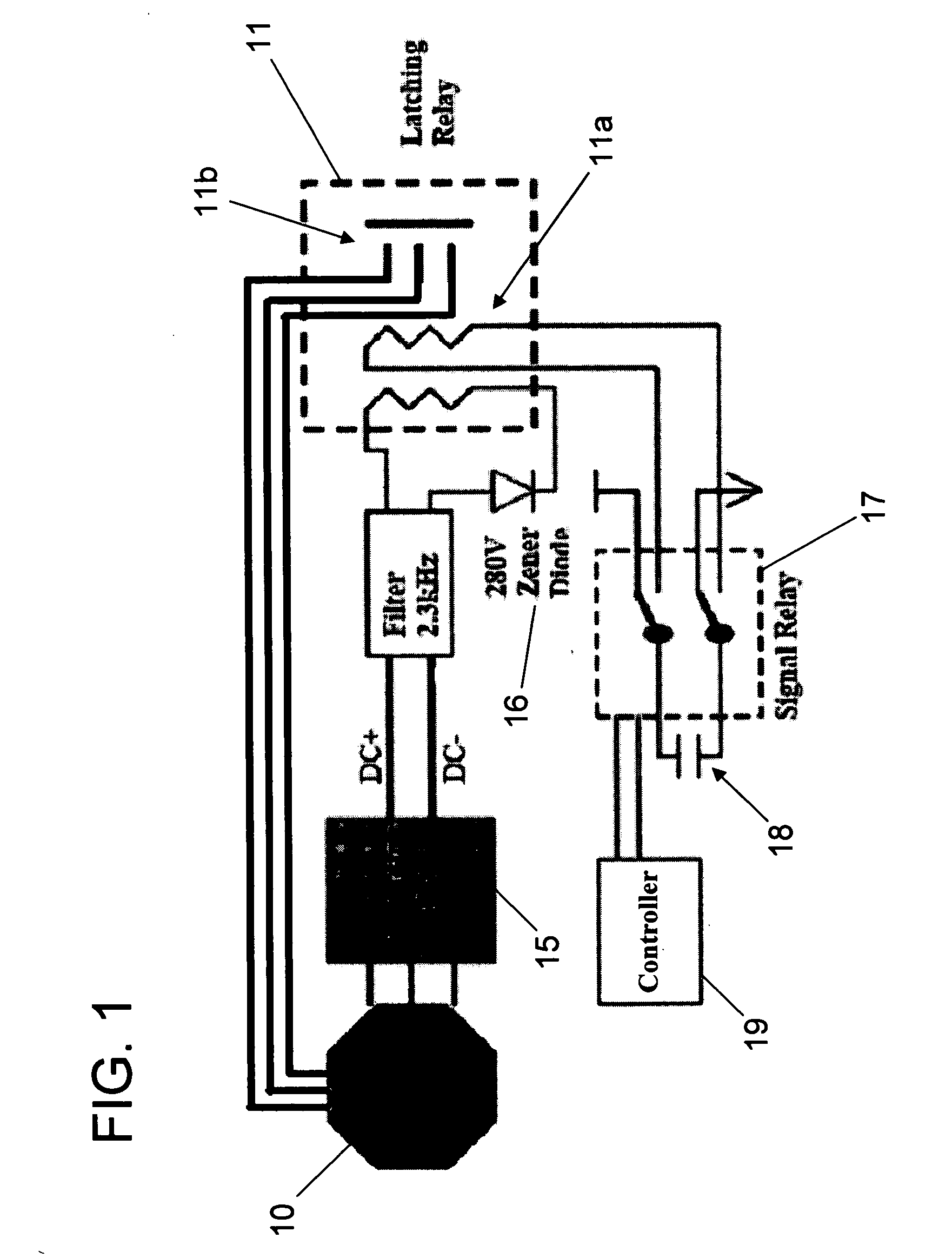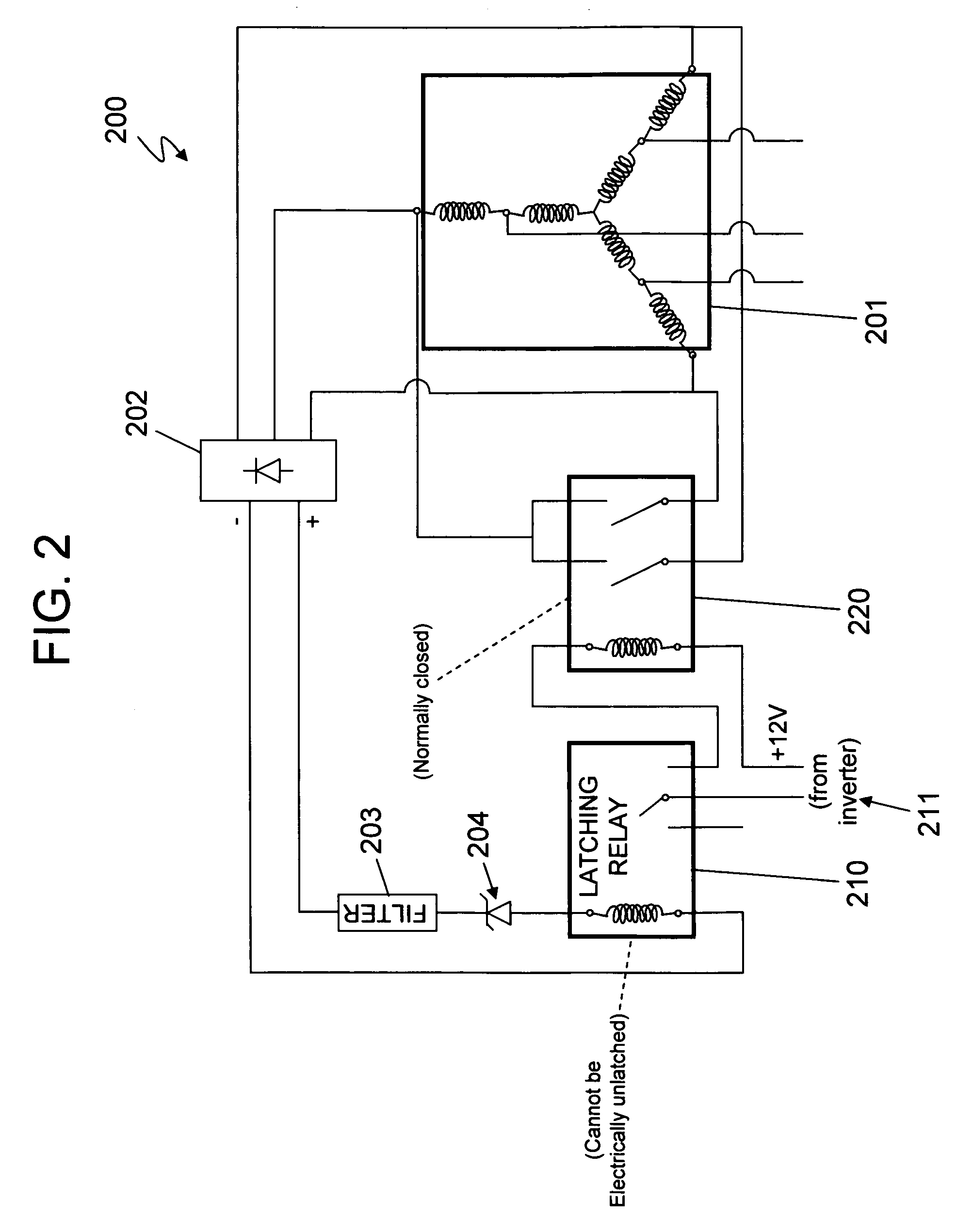Stall controller and triggering condition control features for a wind turbine
a technology of stall controller and triggering condition, which is applied in the direction of variable speed operation control, electric generator control, dynamo-electric converter control, etc., can solve the problems of increasing complexity and cost of such devices and systems, increasing noise, and increasing complexity of devices, so as to reduce noise, cost, or reliability problems, and improve torque.
- Summary
- Abstract
- Description
- Claims
- Application Information
AI Technical Summary
Benefits of technology
Problems solved by technology
Method used
Image
Examples
Embodiment Construction
[0022]The wind turbine controller of the present invention, portions of an exemplary variation of which are shown in FIG. 1, includes an electrical output generation device 10, such as an alternator or a generator, and associated circuitry that provides backup control and triggering event control features for the blades of the wind turbine. The device 10 may also include circuitry for normal operational control (not shown in FIG. 1; see e.g., FIG. 6). The exemplary circuit includes an alternating to direct current (AC to DC) converter, such as a rectifying bridge, a DC to DC converter, and a DC to AC converter. In addition, as shown in FIG. 1, the controller includes triggering event control features, such as a winding shorting device 11, (e.g., a latching relay), that provides shorting of the alternator windings to retard wind turbine motion upon triggering events occurring, such as emergencies. Such winding shorting device 11 may operate, for example, in the condition of extremely...
PUM
 Login to View More
Login to View More Abstract
Description
Claims
Application Information
 Login to View More
Login to View More - R&D
- Intellectual Property
- Life Sciences
- Materials
- Tech Scout
- Unparalleled Data Quality
- Higher Quality Content
- 60% Fewer Hallucinations
Browse by: Latest US Patents, China's latest patents, Technical Efficacy Thesaurus, Application Domain, Technology Topic, Popular Technical Reports.
© 2025 PatSnap. All rights reserved.Legal|Privacy policy|Modern Slavery Act Transparency Statement|Sitemap|About US| Contact US: help@patsnap.com



